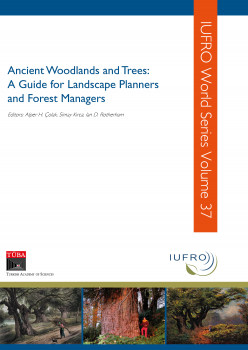Ancient forests in Germany: distribution, importance for maintaining biodiversity, protection and threats

Ancient forests in Germany: distribution, importance for maintaining biodiversity, protection and threats
Humans have tremendously altered the central European landscape for several centuries (Ellenberg and Leuschner, 2010). Thus, there is little virgin forest, and it is located on a few special sites that are not usable by humans, e.g., extremely steep slopes in mountainous areas. Despite early and extensive human impacts, central Europe was mainly covered with forests approximately 1,000 years ago, as shown on a small-scale map by Schlüter (1952, scale 1:500,000). The land-cover reconstruction by Schlüter (1952) was based on sources that vary greatly in quality and refer to the end of Antiquity until the beginning of the early Middle Ages, with a mean of approximately 900 A.D. At that time, clearing of the forests had already begun as well as the drainage of wet areas to acquire land for agricultural usage, but forests clearly prevailed. Forests were still semi-natural due to the marginal effects of humans (Walter and Straka, 1970; Ellenberg and Leuschner, 2010). According to Bork et al. (1998), forests in Germany covered slightly less than 70% of the land around 900 A.D.; but approximately 250 years before that time, they covered c. 90% (Figure 8.1). Since 900 A.D., the human impact on the European landscape has led to extended clearing to acquire agricultural land for food production because of the growing human population. The peak of forest clearing in Germany is dated to the 12th and 13th centuries (late Middle Ages), in parallel with the increasing colonization of the landscape (Mantel, 1990). In the late Middle Ages, particularly in the 14th century, colonization was finished, clearing was stopped, and forest areas recovered (Figure 8.1). From the 16th to the 18th century, several episodes of clearing occurred again, particularly in Brandenburg (northeast Germany, Figure 8.2) and in the northernmost part of Germany (Schleswig-Holstein) because of the increasing number of inhabitants. At the beginning of the 19th century, a lot of clearing occurred again in all of Germany, mainly for receipts to fill the empty public treasury and war chest (Mantel, 1990). In the 19th and twentieth centuries, there was a slight overall increase in forest area, and the pattern of forest-open land distribution changed little. These statements are consistent with Figure 8.1 in Bork et al. (1998). The final period of forest clearing is characterized by extensive conversions of semi-natural deciduous and mixed stands into coniferous dominated stands (Hesmer, 1938; Mantel, 1990)
Thus, it is clear why semi-natural forests withlong habitat continuity, the so-called ancient forests (habitat continuity >200 years), came into focus during a symposium held at the Norddeutsche Naturschutzakademie (NNA) in 1993. The results from this symposium were published one year later (NNA, 1994). The main results were a definition of ancient forests, overviews of activities for an inventory of ancient forests and proving the importance of ancient forests for maintaining biodiversity. Ten years later, all of the ancient and recent forests in Germany were inventoried (Glaser and Hauke, 2004). Most of the studies on ancient forests were published in the German language and are therefore inaccessible for international readership. The main intention of this book chapter is to report (i) the status of ancient forest and recent forest inventories, (ii) the importance of maintaining the plant species diversity of ancient forests, and (iii) the protection of and the threats to ancient forests in Germany. First, an overview of the entire situation in Germany is given, and second, some case studies are used to elucidate a more detailed situation in the northern lowland of Germany where semi-natural ancient forests are particularly rare.
